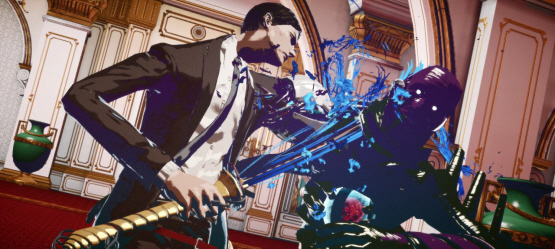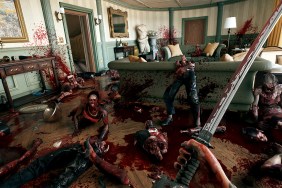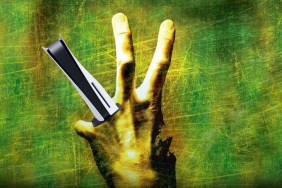In modern Japanese game development, few minds bend and twist as readily as Suda 51’s to give gamers a unique view on life as interpreted by Grasshopper Manufacturer. Just look to the studio’s past work: Shadows of the Damned flipped the princess allegory video games have been treading for decades while Lollipop Chainsaw presented some seriously biting dialog, all while hiding under the veil of titillating slasher-sexploitation. Unfortunately, that creativity and burning drive to create a new and entirely different experience attacking and undermining the player’s ID has largely come up short in Killer Is Dead.
Players accept missions from clients and puzzle through twisted, largely unintelligible maps all while hoping to score with women to upgrade their abilities and equipment. If that sounds like fun, then I did a poor job explaining how everything works. While it’s easy to mash on the Square button and pound your way from objective to objective, very little about Killer Is Dead represents any semblance of intent, as if the ideas poured out of Suda’s head faster than they could be implemented in-game.
With every completed combat mission, players will earn in-game cash which they can spend on presents in the gift shop. When Mondo goes out on Gigolo Missions, he has to look at a woman’s face, breasts, and lower region, for lack of a better term, all to build up a blood meter. At that point, the player can give the woman a present. If she likes it, you’ll continue the process until you’ve filled the heart meter and earned yourself a new upgrade for your gun arm. Check out the second gameplay video below to see a Gigolo Mission in action.
What’s more, due to the confusion and lack of relatable touch-stones, cutscenes frequently feel excruciatingly boring and nonsensical, leaving me to skip every single one until I had completed the game.
It’s not the first Suda game to offer a unique view on the world, but Killer Is Dead improves upon Killer 7’s graphical stylings at a feverish pace. Some frames made me wish there was a GameBoy Printer for the PlayStation 3 and the oddball soundtrack kept a smile on my face, even in the game’s worst moments. Jazzy score-screen tracks aside, Akira Yamaoka’s overall score doesn’t redeem Killer Is Dead from its pantheon of action-game mistakes.
If you’re an experimental gamer who seeks out the weird and unusual, no matter how unintelligible it is, Killer Is Dead will be right up your alley. For everyone else, the game is bargain bin at best. Whether or not you believe the gameplay is sexist, you’ll loathe the total lack of rewarding gameplay in the gigolo missions. If you don’t mind those types of games, our score is sadly still the same – Killer Is Dead simply isn’t a very fun game to play.
-
Suda art and style
-
Yamaoka's soundtrack
-
Total lack of reward in the gigolo missions.
-
Repetitive gameplay over and over.
-
Irrespective of your views on sexism, this is just a bad game








